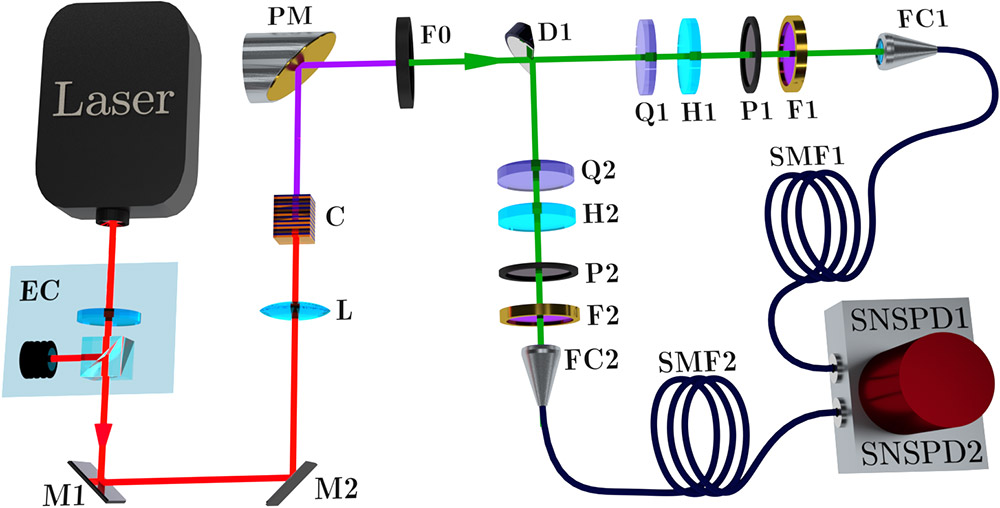BroadDayQComm
Daylight Quantum Key Distribution at 2 Microns – a field test
University of Glasgow researchers have developed and demonstrated a compact photon source to realise a Quantum Key Distribution system capable of operating in daytime for the first time.
A team from the James Watt School of Engineering, led by Dr Adetunmise Dada (Principal Investigator), a Research Fellow in Dr Matteo Clerici’s group at the time, in collaboration with BT, Chromacity, and Covesion, were awarded an EPSRC Impact Acceleration Account project (£18k) in February 2020 to design, set up and analyse a photon source capable of entanglement-based quantum key distribution (QKD) in daytime.
The challenge
Satellite-based QKD promises to be a feasible way to achieve global-scale quantum-secure networks, addressing the security requirements of the next generation of global communications. One of the critical challenges preventing the wide-spread use of space-to-ground QKD is the presence of sunlight, blinding the single-photon detectors required to exchange quantum cryptographic keys, and limiting satellite QKD to night-time.
The 2-2.5 μm waveband is a promising candidate for daylight quantum communication. This spectral region also offers low losses and low dispersion in hollow-core fibers and in silicon waveguides. To date, no demonstration of capability for QKD has been carried out in the 2-μm wavelength window—the target of this project—where the solar background noise is 3 times less than at 1550 nm which is the working wavelength in state-of-the-art experiments. So far, all such experiments have been restricted to ≲1500 nm.
Outcomes
This project successfully achieved several milestones to realise this technology. Having designed and set up the photon source in a laboratory environment, a QKD protocol experiment was tested. Following successful measurements in laboratory conditions, steps were also taken to simulate outdoor conditions (i.e., daylight). It was found that the system demonstrated a positive QKD key rate, a world first for an entangled-photon source operating with at ~2 μm.

The project has resulted in:
- New products for the quantum-security market: Preliminary characterization of Hamamatsu spatial light modulators (SLMs), providing important information and feedback regarding developing this into new product line, i.e., SLMs for the 2.1-μm wavelength window.
- The initiation of a potential joint Innovate UK grant proposal with Chromacity LTD, a partner on this project.
- The initiation of collaborations (2 grant co-applications submitted, and another in preparation) and ongoing discussions with BT.
- A successful international collaboration with Jędrzej Kaniewski (University of Warsaw) initiated solely as a result of the activity in this project.
- The initiation of a collaboration with the Optoelectronics Research Centre (ORC) at the University of Southampton, leading to joint grant applications (quantum communications hub partnership resource funds, and Royal Society).
- The publication of 2 journal papers.
- The dissemination of new research results at 5 international conferences.
- An invited review paper in Advanced Quantum Technologies (QUTE) (in preparation).
Furthermore, Dr Dada has subsequently secured a Lectureship post within the School of Physics and Astronomy. Following on from this project, Dr Dada has been in discussion with several key players in the telecommunications industry looking to support development of new products for the quantum security market. Additionally, he is reaching out to other end users of QKD technology to foster new collaborations, research, and funding opportunities. Additionally, Dr Dada co-organised the Quantum Technology School (2020-21) for >100 high school students, giving talks and experimental demonstrations of the effects that underpin QKD technology.

